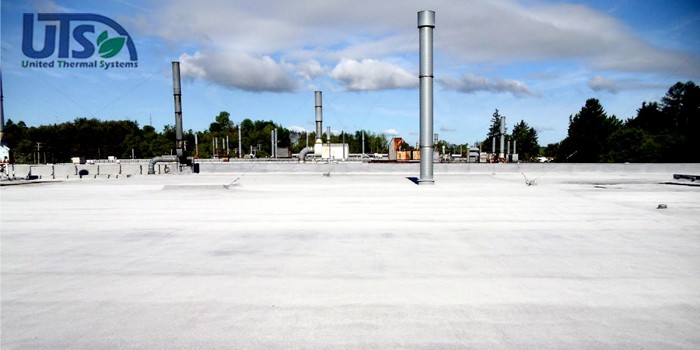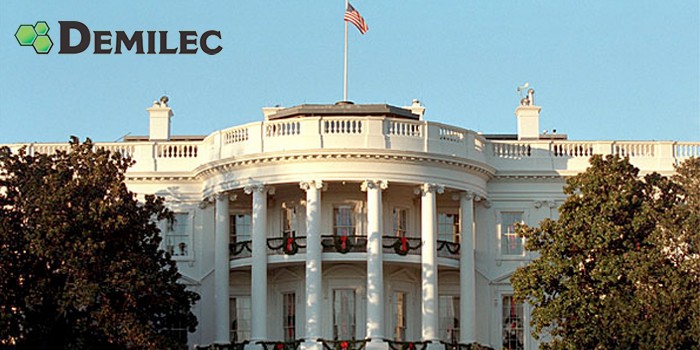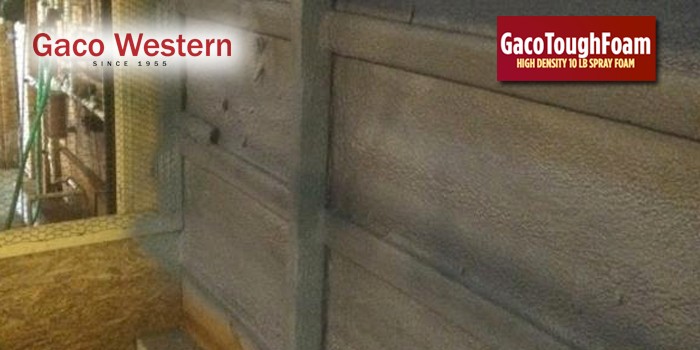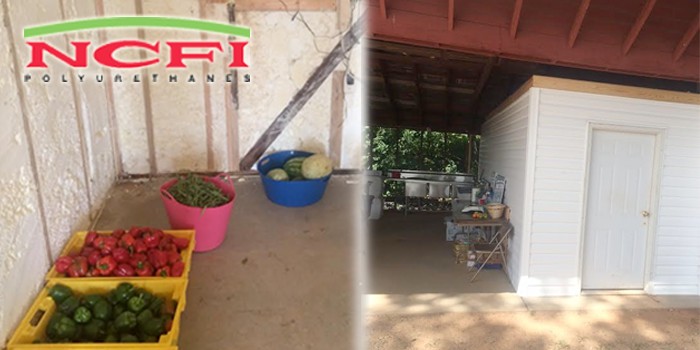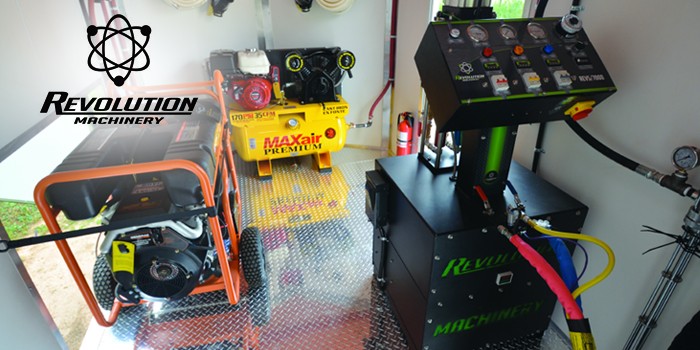Exterior SPF Application Seals and Insulates Newly Constructed Marine Base Barracks
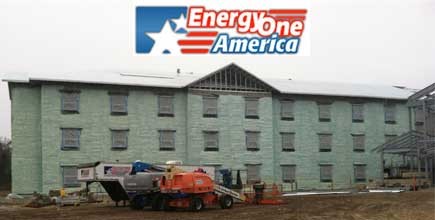
JACKSONVILLE, NC – August 29, 2013 – Inside the U.S. Marine Corps base of Camp Lejeune, the construction of three different buildings took place. These buildings are to be used as Bachelor Enlisted Quarters (BEQ's) for housing existing Marines and new recruits. The architect wanted to give the buildings a monolithic air and vapor barrier, so one of the construction specifications for these buildings was the exterior application of spray polyurethane foam.
The spray foam application's purpose was to give the BEQ's structural rigidity and insulation. Energy One America (EOA) was brought in to apply the foam, which entailed spraying the exteriors of all three buildings as their construction progressed. The project also included the application of spray foam on the soffits of the attic on two of the buildings. Jason Pluchinsky, commercial operations manager for EOA, said that the building's architects' green light for foam installation was the right choice and affirmed that an exterior application was the only way to provide an air and moisture barrier for all three buildings.
"They get to kill three birds at once with one application: they get to seal their buildings from air, they get to seal their buildings from vapor, and they get good insulation all at the same time," Pluchinsky said.
For overspray protection, the crew masked off the finished surfaces with plastic as they were being built. Using boom lifts, the crew able to maneuver around the buildings during the application. They wore PPE and fresh air respirators during the project.
The crew applied two inches of InsulBloc, a 2 lb. closed-cell spray polyurethane foam made by NCFI Polyurethanes, on the exterior of each building, which was a concrete masonry unit (CMU) wall substrate. The crew installed four inches of InsulBloc along the attic's DensGlass soffits of two of the buildings to seal in the envelope. According to Pluchinsky, a whopping 163 sets of foam were utilized, which comprised a total spray area of 500,000 square feet. Pluchinsky explained that there was no SPF applied on the attic of one of the buildings because the project's architect chose to go with a vented attic system for that particular building, something Pluchinsky did not agree with.
"As a spray foam applicator, I disagree with a vented attic system since it does not condition the attic," Pluchinsky said. "But that's what they went with after we sealed the envelope of the other two buildings."

After the SPF was applied, the crew installed 14 mils of DC315, an intumescent thermal barrier coating made by IFTI, on top of the foam applied along the soffits of the attics to meet with the building code.
Pluchinsky pointed out that the North Carolina weather presented a major challenge and increased down time on the project.
"For some reason, after two o'clock, it got too windy to spray," Pluchinsky said. "We were close to the ocean, so the wind was a major hurdle for us. It also rained multiple times during the weeks of the project and that slowed us down as well."
The 10-man crew had as many as four rigs at a time equipped with Graco H-20/35 Pro proportioners. One of the rigs had two machines in it. The crew used Graco Fusion AP spray guns during the applications. Pluchinsky noted that because they had so many rigs on site and as many as five crewmembers spraying foam at the same time, they were able to work fast and stay ahead of schedule. However, since there were other construction crews at the site, there was significant down time from when the crew finished with one of the BEQ's, and then had to wait for other crews to finish putting up the CMU walls and the windows of the other BEQ's before resuming the SPF project.
"Our ability to outwork the other trades, while it was a good problem to have, made us work faster than the pace that the builder assumed," Pluchinsky said. "We would catch up to the CMU crew's fairly quickly, we would do one-third of the building, and then have to wait on the CMU crew to lay more brick, then we finished another third, and waited again."
According to Pluchinsky, his clients were surprised at how fast and how effectively he EOA crew worked.
"We pride ourselves on putting four or five rigs on the job at a time," Pluchinsky said. "They had worked with other companies in the past that used one rig for sizable projects such as this one, and then took a long time to complete the job. At the pace we worked with those extra rigs on site, we were able make up the down time lost to weather delays and the constraints of other crews. We were able to apply an average of 10,000 sq. ft. of SPF per day, so they were pleased."
Pluchinsky confirmed that it took the crew a month of working time to complete the project at Camp Lejeune, which gave the BEQ's a complete monolithic coat on the outside of the building that provided a superior air, vapor, and insulation factor that no other product could deliver.
About Energy One America: Energy One America specializes in spray foam insulation, crawl space insulation, and mold prevention and services homes in cities throughout the Southeast in: North Carolina, South Carolina, Georgia, Virginia and beyond, including, Wilmington, Winston-Salem and Charlotte, NC; Myrtle Beach, Bluffton and Charleston, SC; and Augusta, GA. For more information about Energy One America, please use the contact details and links provided below
Disqus website name not provided.




